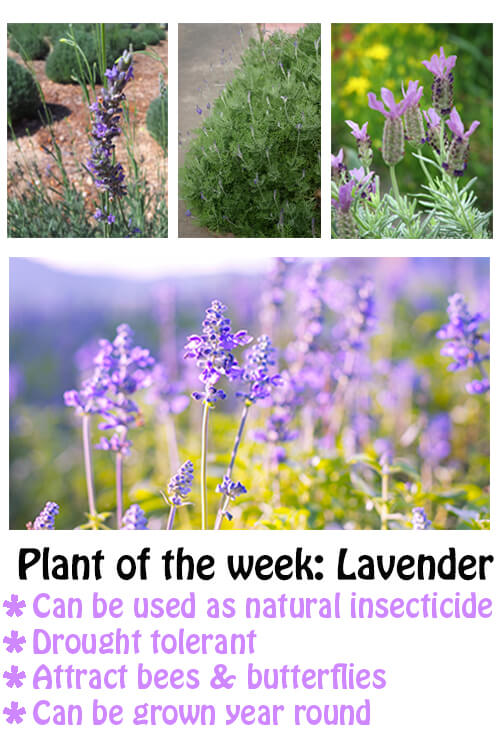Lavender is a multitasking herb – beautiful in the landscape attracting wildlife and functional in the kitchen when added to food and drinks.
I love lavender! It is beautiful in the landscape and attracts wildlife, but what I love most about lavender is that it is great at multitasking. Lavender can be a little tricky to grow, but if you have it in well-drained soil and don’t overwater it you can reap the benefits of this hardworking plants for several seasons.
Lavender is a wonderful culinary herb. It’s one of the herbs in herbs de provence which is lovely on fish or chicken. It can also be used on grilled vegetables, in lemonade, even ice cream or it can be dried to use in sachets and pot pourri. The oil is frequently used in soaps, lotions, bath salts, candles and household room deodorizers. The oil in lavender is also a natural insect repellent. 
Lavender Attributes:
- Provides an element of fun in the landscape. The plants themselves are small, broom-like, fairly humble, but add the intoxicating fragrance of lavender on a sweltering day and there may be magic.
- It can make a nice sweep in the middle border, but plan on replacing it periodically.
- Generally lavender is intolerant of soggy soils and a rainy spell can spell doom. Be sparing with mulch, or use gravel instead of mulch to help dry out the air around it on a summer morning.
Generally, Spanish, Egyptian and ‘lavandin’ lavenders like ‘Provense’ and ‘Grosso’ have all performed well in San Antonio. In the drier hill country, the English lavender varieties can also be grown.
Key Lavender Facts:
- WaterSaver: Yes
- Plant Type: Herb
- Soil Type: Sandy
- Wild Life: Butterflies, Bees, Pollinators
- Non-Invasive: Yes
- Maintenance Score: 1
- Type of Maintenance: May appreciate occasional supplemental irrigation

